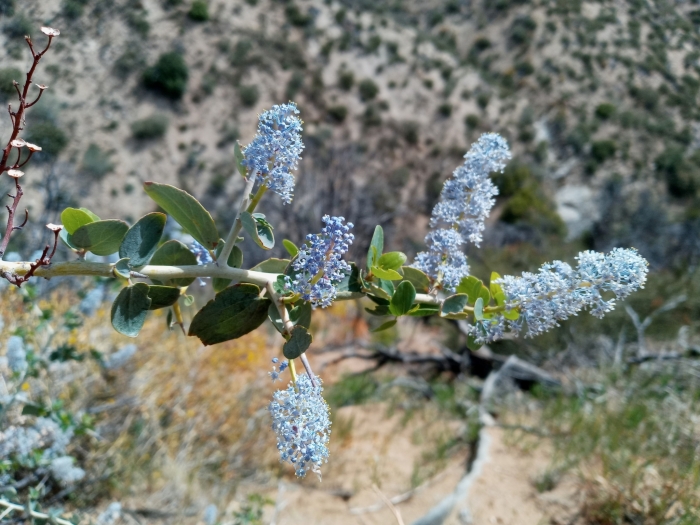Chaparral Whitethorn
(Ceanothus leucodermis)
Chaparral Whitethorn (Ceanothus leucodermis)
/
/

Daniel S.
CC BY 4.0
Image By:
Daniel S.
Recorded By:
Copyright:
CC BY 4.0
Copyright Notice:
Photo by: Daniel S. | License Type: CC BY 4.0 | License URL: http://creativecommons.org/licenses/by/4.0/ | Rights Holder: Daniel S. | Publisher: iNaturalist | Date Created: 2021-04-25T10:38:38-07:00 |
























































Estimated Native Range
Summary
Ceanothus leucodermis, commonly known as Chaparral Whitethorn, is an evergreen shrub native to the chaparral and mixed evergreen forests of California and the coastal ranges of Northwestern Mexico. It can grow to heights of up to 13 feet (4 meters) with a similar spread, and it is characterized by its stiff, thorny branches. The bark is distinctive with its gray-white, waxy appearance. The small, oval, evergreen leaves are alternately arranged and have a white powdery coating that can be easily rubbed off. From late spring to early summer, Chaparral Whitethorn produces showy clusters of tiny flowers in shades of blue, lavender, or white, which are highly attractive to bees and butterflies.
Chaparral Whitethorn is valued for its drought tolerance and is often used in xeriscaping, naturalistic plantings, and as a wildlife attractant. It is also suitable for erosion control on slopes. This shrub thrives in full sun and requires minimal water once established, making it an excellent choice for water-wise gardens. It prefers well-drained soils and is tolerant of poor, rocky substrates. While generally low-maintenance, it can be susceptible to fungal diseases if conditions are too moist. Gardeners should be cautious as it can become quite dense and may require pruning to maintain shape and size.CC BY-SA 4.0
Chaparral Whitethorn is valued for its drought tolerance and is often used in xeriscaping, naturalistic plantings, and as a wildlife attractant. It is also suitable for erosion control on slopes. This shrub thrives in full sun and requires minimal water once established, making it an excellent choice for water-wise gardens. It prefers well-drained soils and is tolerant of poor, rocky substrates. While generally low-maintenance, it can be susceptible to fungal diseases if conditions are too moist. Gardeners should be cautious as it can become quite dense and may require pruning to maintain shape and size.CC BY-SA 4.0
Plant Description
- Plant Type: Shrub
- Height: 3-9 feet
- Width: 3-9 feet
- Growth Rate: Moderate
- Flower Color: White, Blue
- Flowering Season: Spring
- Leaf Retention: Evergreen
Growth Requirements
- Sun: Full Sun
- Water: Low
- Drainage: Fast
Common Uses
Bee Garden, Bird Garden, Butterfly Garden, Drought Tolerant, Erosion Control, Fragrant, Groundcover, Hummingbird Garden, Low Maintenance, Showy Flowers, Street Planting
Natural Habitat
Native to chaparral and mixed evergreen forests of California and the coastal ranges of Northwestern Mexico
Other Names
Common Names: Chaparral White Thorn
Scientific Names: , Ceanothus leucodermis, Ceanothus divaricatus var. grosseserratus, Ceanothus divaricatus var. laetiflorus,
GBIF Accepted Name: Ceanothus leucodermis Greene